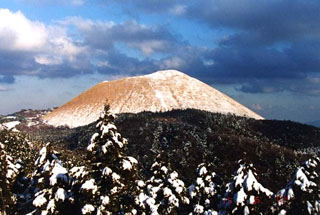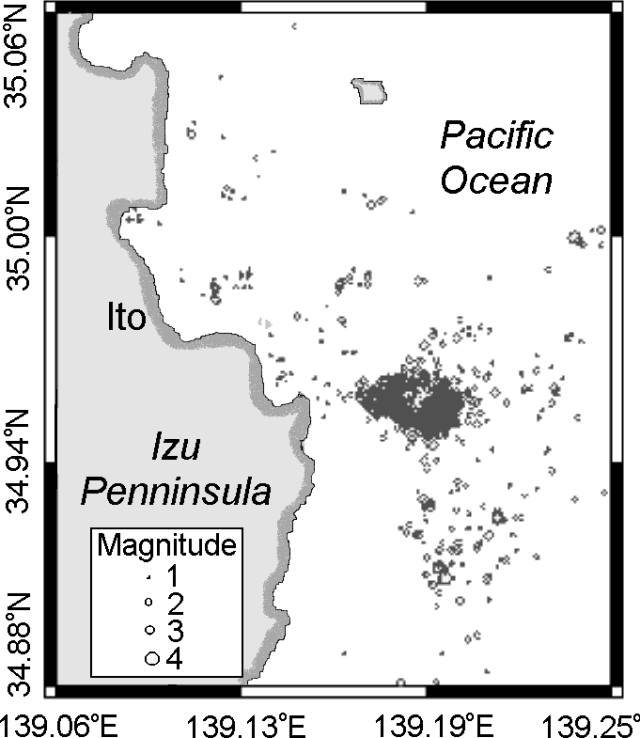Report on Izu-Tobu (Japan) — April 1998
Bulletin of the Global Volcanism Network, vol. 23, no. 4 (April 1998)
Managing Editor: Richard Wunderman.
Izu-Tobu (Japan) Offshore earthquake swarm in late April
Please cite this report as:
Global Volcanism Program, 1998. Report on Izu-Tobu (Japan) (Wunderman, R., ed.). Bulletin of the Global Volcanism Network, 23:4. Smithsonian Institution. https://doi.org/10.5479/si.GVP.BGVN199804-283010
Izu-Tobu
Japan
34.9°N, 139.098°E; summit elev. 1406 m
All times are local (unless otherwise noted)
A 13 May report stated that elevated seismicity began on 20 April in the eastern Izu Peninsula and started declining on about 10 May. The peak occurred during 21-22 April, when 1,000 earthquakes took place offshore E of Ito City at depths of 2-9 km (figure 19). The largest earthquake of this swarm, on 3 May, was M 5.7. In total, 10,800 earthquakes were detected during 20 April-12 May; of these, 207 were felt by nearby residents. The activity was located SE of an October 1996 swarm (BGVN 21:11) and S of a March 1997 swarm (BGVN 22:02). The earthquake mechanism was SE-NW compression, similar to the March 1997 events.
Strain meters and tiltmeters showed slow deformation about 15 hours before the earthquakes started, clear deformation during 21-22 April, and declining deformation thereafter. GPS surveys disclosed 8 cm of extension between Komuro and Hatsushima (12 km apart); by 9 May the line was no longer extending. During the early stages of the swarm and later on 3 May, a change in the water level of a well N of Omuro-yama was observed. Crustal deformation observations showed inflation in the area of seismicity similar to during previous events; scientists suggested that the deformation was linked to shallow magmatic activity.
Geological Summary. The Izu-Tobu volcano group (Higashi-Izu volcano group) is scattered over a broad, plateau-like area of more than 400 km2 on the E side of the Izu Peninsula. Construction of several stratovolcanoes continued throughout much of the Pleistocene and overlapped with growth of smaller monogenetic volcanoes beginning about 300,000 years ago. About 70 subaerial monogenetic volcanoes formed during the last 140,000 years, and chemically similar submarine cones are located offshore. These volcanoes are located on a basement of late-Tertiary volcanic rocks and related sediments and on the flanks of three Quaternary stratovolcanoes: Amagi, Tenshi, and Usami. Some eruptive vents are controlled by fissure systems trending NW-SE or NE-SW. Thirteen eruptive episodes have been documented during the past 32,000 years. Kawagodaira maar produced pyroclastic flows during the largest Holocene eruption about 3,000 years ago. The latest eruption occurred in 1989, when a small submarine crater was formed NE of Ito City.
Information Contacts: Headquarters for Earthquake Research Promotion, Science and Technology Agency, 2-2-1, Kasumigaseki Chiyoda-ku, Tokyo, Japan 100; Volcano Research Center, Earthquake Research Institute (ERI), University of Tokyo, Yayoi 1-1-1, Bunkyo-ku, Tokyo 113, Japan; Katsuyuki Abe, Earthquake Information Center, ERI.


